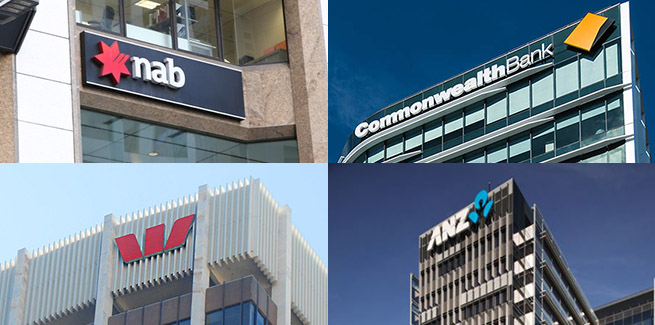The Australian Prudential Regulation Authority’s (APRA) latest monthly authorised deposit-taking institutions statistics (MADIS) has revealed that the big four banks diverged in the mortgage market over the month of July, following growth in each their respective portfolios in June.
Most notably, NAB and Westpac have reported sharp contractions in their mortgage books, following combined growth of $3 billion in June.
NAB’s mortgage book contracted by approximately $1.3 billion, from $263.3 billion to $262 billion.
This was underpinned by a $1.1 billion contraction in NAB’s investment home loans book, from $107.1 billion to $106 billion, and a $200 million decrease in its owner-occupied book, from $156.2 billion to $156 billion.
Westpac’s portfolio (included subsidiaries) contracted by approximately $1.4 billion, from $408.5 billion to $407.1 billion.
Most of Westpac’s run-off also came from the investment portfolio, which contracted by approximately $800 million, from $178.3 billion to $177.5 billion.
However, run-off also exceeded settlements across Westpac’s owner-occupied book, which decreased by approximately $600 million, from $230.2 billion to $229.6 billion
ANZ, CBA build on momentum
In contrast to NAB and Westpac, ANZ and the Commonwealth Bank of Australia (CBA) have bolstered their respective mortgage portfolios in July by a combined $2.9 billion.
Following a $2.2 billion increase in June, ANZ’s mortgage book grew by a further $1.8 billion in July, from $250.3 billion $252.1 billion.
As in previous months, owner-occupiers drove ANZ’s book growth, contributing to 78 per cent of the total increase ($1.4 billion), lifting the owner-occupied portfolio from $164.4 billion to $165.8 billion.
ANZ’s investment portfolio increased by approximately $400 million, from $85.9 billion to $86.3 billion.
Meanwhile, CBA’s mortgage portfolio (includes Bankwest) increased by approximately $1.1 billion, from $453.3 billion to $454.4 billion.
CBA’s book growth came exclusively via the owner-occupied book, which grew from $296.4 billion to $297.5 billion, while its investment portfolio remained stable at $156.9 billion.
Since the onset of the COVID-19 crisis, CBA’s portfolio has increased by a cumulative $8.1 billion
System growth subdued
The release of the APRA statistics has coincided with the publication of the Reserve Bank of Australia’s Financial Aggregates data, which revealed that total housing credit grew 0.2 per cent in July, in line with the previous month.
In annual terms, housing credit remains subdued, with growth of 3.1 per cent in the 12 months to July 2020, down from 3.2 per cent in the previous corresponding period.
Total credit growth fell 0.1 per cent in July, following a 0.2 per cent decrease in June. Over the 12 months to July 2020, total credit grew 2.4 per cent, down from 3.1 per cent in the 12 months to July 2019.
[Related: BNK profits bolstered by multichannel lending growth]
 ;
;
